Thief (PC) Review: A Pedestrian Stroll Through the Shadows
After slipping into the shadows ten years ago, the stealth-adventure genre's flagship series,
Thief, has resurfaced. Despite Looking Glass Studios and Ion Storm,
Thief's original development studios, being long defunct; the series' publisher Eidos has survived a merger into Square-Enix which brings the tale of continuity to Canada. Announced back in 2009 by then recently christened Eidos Montreal, the fourth incantation for the thieving stealth-action series,
Thief has finally slipped out of the shadows.
Unfortunately for the longevity of their series, Garrett, the protagonist anti-hero master thief; may be at the end of his rope. Not only has
Eidos Montreal recently laid off 27 employees,
Thief as a whole has failed to capitalize on the previous successes of the franchise with a premature vision of a modern rendition for the series. Although the core mechanic of
Thief afford players with an experience reminiscent of the previous three; much of the game from its environment and atmosphere both visually and auditory veil the challenging stealth genre with pedestrian entertainment value which serves to diminish the intrigue for this style of gameplay.
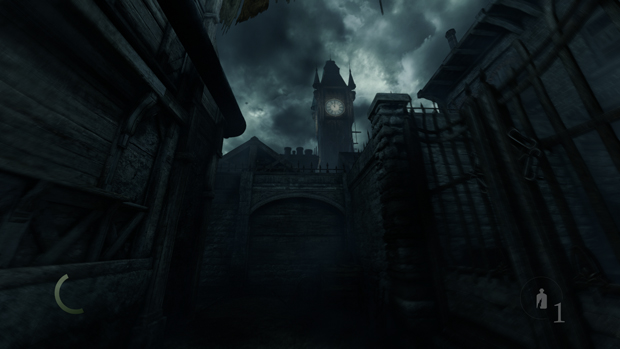
Given the previously reported
development issues over the five years
Thief spent in incubation, aspects of the game in retrospect fit the problems which office tension and revolving development teams bring to video games. The storyline is worn and borrowed but with unique flair that fully coalesces by games-end but it is not that interesting, certain mechanics and visual aspects are carried over from
Thief: Deadly Shadows which could have been approached differently with others that would fit well into the latest release for the series have been forgotten, the tumult which The City experiences over the course of the storyline closely resembles the plight of Duwall during
Dishonored, while the map feels ripped from the grasp of
Assassin's Creed III. These aspects reflect a game within an established series that has lost it's own identity by virtue of new creative and development teams which struggled to remain whole from the start resulting in a AAA product that took from recently successful titles rather than remaining unique to itself.
Although the gameplay is functional and at times as exciting and challenging as other titles in the series,
Thief suffers from a hub-city that is claustrophobic and fragmented patrolled by guards whom are easily mitigated as obstacles or threats with a traversable cityscape that limits mobility through the mechanic of a grappling hook "Claw" and motion-captured vaulting animations which serve to dictate few paths throughout the districts of the city itself and the buildings within it; diminishing by routine any sense of exploration and adventure.
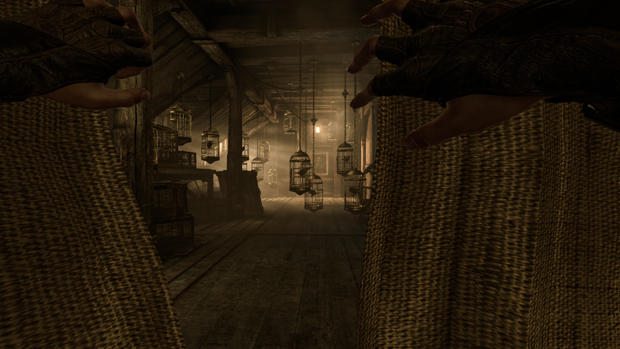 Gameplay
Gameplay
The newest features to
Thief as a series, Garrett's magical "Focus" vision and graphically superimposed visual indicators marginalized a key aspect of the stealth genre; you are seeking things in the environment meaning your task is to find them, leaving part of the adventure in searching for them. However, the visual indicators of
Thief completely remove that precept of searching by providing a crutch that helps players thoughtlessly traverse the area, find the loot they are searching for, and even pick the lock safe guarding it. Luckily Eidos Montreal offers the option to turn all of these visual indicators off, including the "Focus" vision which resembles Corvo's infrared-inspired sight from
Dishonored. Having played with them on and off; the authentic
Thief experience is had these aids off as the indicators only serves as a speed-read through the game, and henceforth storyline. Though the game tracks collectable items and paintings you've found, what sense of achievement can you honestly gain by obtaining them when these indicators and "Focus" vision pointed them out for you in neon blue?
Despite being a 10-year old carry over, lock picking in
Thief wasn't bad, nor was it inherently difficult. Although an audio indication would have been appreciated for a more thorough experience, the animated cue indicating that a pin had been set in it's correct position sufficiently afforded the player enough stimuli to successfully pick a lock within the heads-up display visual indicator. Since the game furthermore doesn't teach players the animated cue during the tutorial, the task of successfully picking a lock without the HUD indicator activated does force players to intuitively identify the native cue if they want to quietly pick a lock in a timely fashion. Although the game doesn't offer many instances where timeliness in picking a lock is necessary, the sound produced by improperly setting a pin is enough to alert proximal guards or civilians of your presence.
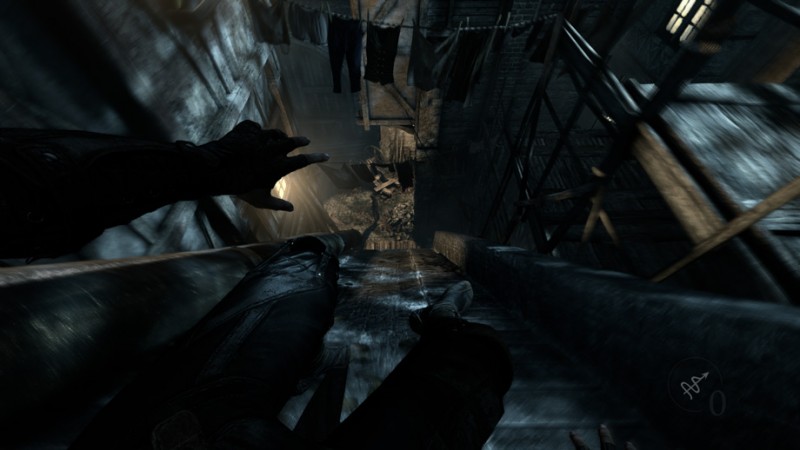
Combat in short is awful. Simply avoiding it at all costs is explicitly advisable. Naturally, given that
Thief has always revolved as a series around theft, it is reasonable that you as Garrett are at a disadvantage in combat against a Watchmen. However, mistakes are made and when those mistakes alert a guard to your presence the series has always provided you with the means to defend yourself; whether that be the sword from the first two, or the dagger from
Deadly Shadows. In the reboot, you have a bow with a few different offensive arrows and your Blackjack club; the former of which are best utilized offensively while undetected.
As for the club, the combat mechanic has been antiquated to the extent of a 2-D side-scroller in a 3-D realm; you have one attack animation and in that same regard one way to strike... broodingly. Instead of allowing players to wield their club as the series offered previously,
Thief reduces your club swing to a ping-pong paddle back-hand of a prod rather than swinging it... like a club. Reducing fighting to single keys with proximal functions that extend to dodging attacks and back-handing with your club. Of course the obvious solution is to knock the guards out. The problem which arises when you try, as you can only knock out guards from the flank or directly behind them; outside of their cone-of-vision. Previously you could cue your club to knock an unsuspecting guard out as he walked past you lurking in the shadows; since control of the Blackjack has been migrated from the mouse to the keyboard getting the drop on an unsuspecting guard is no longer a possibility.
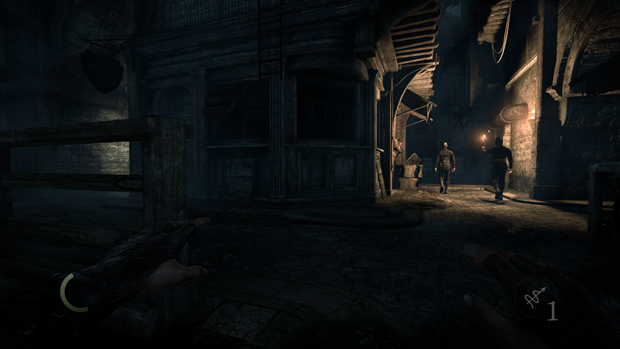
Fortunately, the AI for the guards has also suffered. Don't take that the wrong way, they aren't incompetent but their behaviors are set with a clock and reset timer along with simple and consistent patrol patterns from the timing to their routes. This makes the guards not only easy to navigate through and around, it also greatly influences your own path throughout the game, yet another aspect of limitation. Whereas guards once followed long patrols that were time consuming to follow so that you could fully understand and visualize them in previous
Thief titles, the fourth installment has significantly shortened patrols. They are easily deductible and predictable. Adversely, they do search around if they've spotted or heard you. If you jump into one of the many conveniently placed empty wardrobes, guards commonly search them while in pursuit regardless of line-of-sight ripping you out if they happen upon the one you've chosen to duck into. They also search corners and crevasses, patrol outside of their defined patterns, and react aggressively should you knock out their partner; but they aren't hounds. After a short while, if you've knocked out one in a pair, the remaining guard will return to his defined pattern making him easy prey rather than ruthlessly pursuing the individual whom obviously incapacitated his partner until you the assailant have been found.
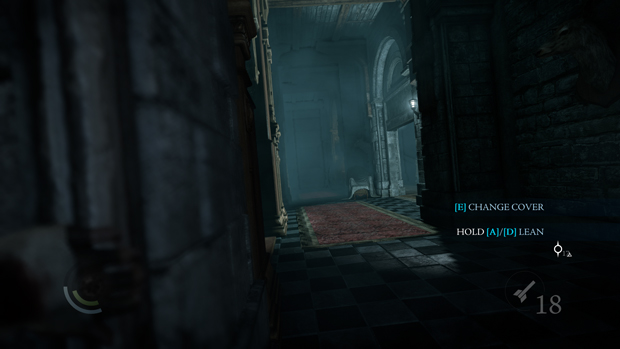
The free-lean mechanic and flattening mechanic have been removed in favor of a snap-to cover system that let's players lean around objects they have attached themselves to.
Environment and Atmosphere
Though a vast and sprawling Industrial age inspired metropolis with a steampunk aesthetic that visually is authentic and thorough with a high fidelity depth of field in detail, The City itself which you can explore is remarkably claustrophobic and fragmented due to the loading areas between the various districts and neighborhoods. These easily accessible and numerous loading areas furthermore serve as a crutch for evasion if you are spotted since entering a different area severs your connection to those guards which ceases their pursuits as you load them out of existence, similar to fleeing creatures in
Everquest. These hub-areas are also quite small with less than 100 meters between different loading zones in any direction and few buildings that can be visited. Since many of these hud-areas are purpose-oriented they mainly serve as an avenue between Chapters in the main storyline or side jobs; which furthermore limits your freedom to explore The City at-large since these areas won't become accessible until your progress through the storyline deems them necessary.
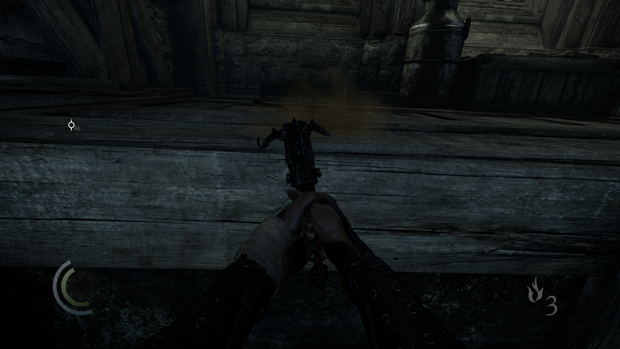
Two features, one new and one old, also limit by the merits of design your freedom of mobility throughout town veiled with top-notch animations that in retrospect best serve as a distraction from the routine routes of travel between the districts of the City; the first being the "Claw" grappling hook tool and the second being the return of rope arrows. While the "Claw" empowers Garrett with the means to grapple up scaffolding, grates, and other aspects of infrastructure; these interactable aspects of level design are sparingly placed throughout the open city, chapter areas, and side jobs.Though the animations are high quality, the places where the "Claw" can be put to use dictate a few lanes of approach while navigating the city; essentially giving you two options in the city, up to the narrowed catwalk roofs or down on the streets in the shadows. Within the chapter levels and side jobs, the "Claw" as an opportunistic tool for exploration becomes more whole as it can allow you to quickly break line-of-sight with guards (though creating a distinct metal-on-metal noise which they tend to ignore) broadening your path vertically along with a wrench tool that can be purchased for ventilation ducts which multiplies your path options at ground level.
The audio and visual environments are positive achievements. Though much of the game fails to impress, the game sounds and looks beautiful.
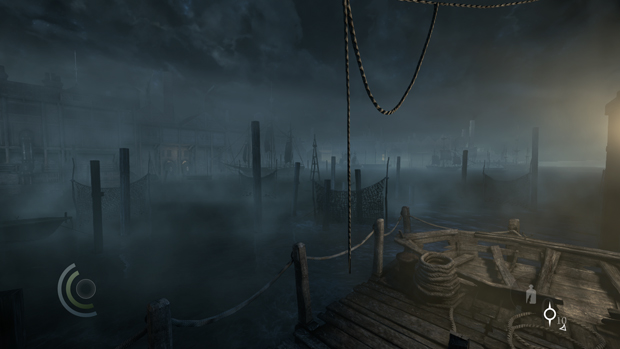
A well engineered audio experience; the different surfaces found throughout the game produce varied types of sound at different noise levels which is true to the series in whole. Footsteps appropriately vary in decibels of sound when transitioning from stone or wood to carpets and rugs, which are fond friends to a thieve's feet. The game is also littered with other aesthetics on it's surfaces such as ponds of water, pools of blood, or shards of glass; all of which emit different sounds when stepped upon. Other auditory aesthetical touches throughout the game cascade the eerie visual environment with an accompanying fidelity that fits the steampunk setting from steam engines, drafting back alleys, to dripping drainage systems, and in on particular area a hydraulic meat-hook conveyor. However, the audio scripting has fallen short. Also littering the cityscape are triggered ambient conversations and dialogue which have a tendency to loop and overlap themselves whenever you traverse over the trigger back and forth. At other times the audio scripting seems to fail as subtitle text appears on screen yet none of the dialogue is heard.
Visually the game is presided over by a dreary environment. Following the opening tutorial, the city is constantly overcast on gloomy fog-laden nights obscuring a persistent full moon; casting perpetual light across The City with relatively dark shadows cutting deep throughout the thoroughfares and alleys. Though not perfectly dark anywhere, you do have to see...even in the shadows. Lacking pitch blackness even in completely unlit areas such as ventilation ducks, the game provides ample visibility everywhere without having to alter Brightness levels. Unfortunately if you seek to achieve a darker environment, adjusting the brightness level by reducing it adversely diminishes the illumination of the lighting throughout the game. The lighting is acute casting high fidelity shadows that stretch and pivot off surfaces with character movement; torches, candles, and static lighting produce convincingly authentic luminosity and globes of light. Although the guards can't always see you when you can see them, if they pass within a few feet of you while in the dark they will spot you.
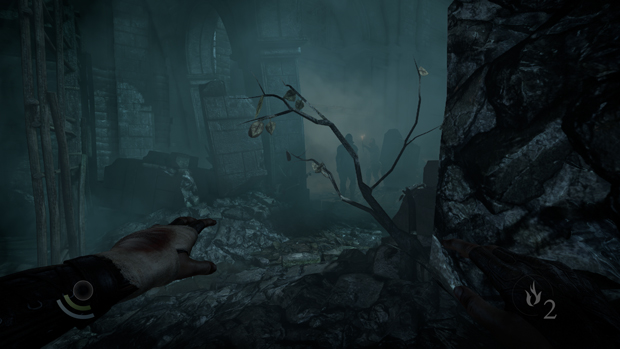
The dialogue and voice-acting has also failed to impress given the ample years of time to script and record a quality dialogue track with the resources behind the development of
Thief. At times remarkably crude, grossly immature, and unnecessarily profane; the vocabulary consistently fails to reflect the setting and prior games in the series, it also fails to be consistent. Routinely driving by modern North American slang and profanity, the storyline dialogue is consistently at odds with the setting-appropirate ambient dialogue throughout The City; for those that have played the previous games I have only heard "taffer" once throughout the entire game. The voice acting furthermore fails to bolster the setting with little consideration for accents, save a very few characters whom are not related to the storyline. The accents between the storyline characters and ambient dialogue is yet another shortcoming in consistency as the main characters are clearly speaking in a number of American and Canadian accents slang included while the ambient accents are more European.
Textually the vast amount of documents, letters, and newspaper clippings fair much better than the spoken dialogue by reinforcing the European aesthetic to the series' steampunk inspired setting; especially the lesser educated characters whom are only encountered by their written word as the spelling and grammar are consistently reflective of their vernacular.
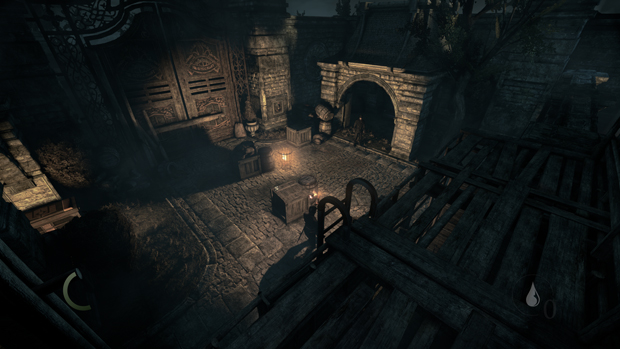
It has been a long road for
Thief as a series, as it has been a long road for the development of the fourth installment. Although the game play is reminiscent of the previous titles, much of the game as a whole seems borrowed from more recent and successful titles that dispels the identify of
Thief as a series. At times the latest addition to the series is inconsistent with the setting; though it is a visual and audio achievement, other areas of the game are clear shortcomings that could have been mitigated by more consistency during the development with a solid team and a stronger effort at polishing intricately modified use of the Unreal Engine 3.
Pros
- Visually a beautiful yet eerie cityspace with extraordinary depth of field in detail
- Designed more intently with stealth and evasion in made, mitigating combat
- Visual HUD indicators and all be deactivated
Cons
- Claustrophobic and fragmented level design
- Easily predictable and avoidable guard patrols
- Inconsistency between main dialogue and game setting








